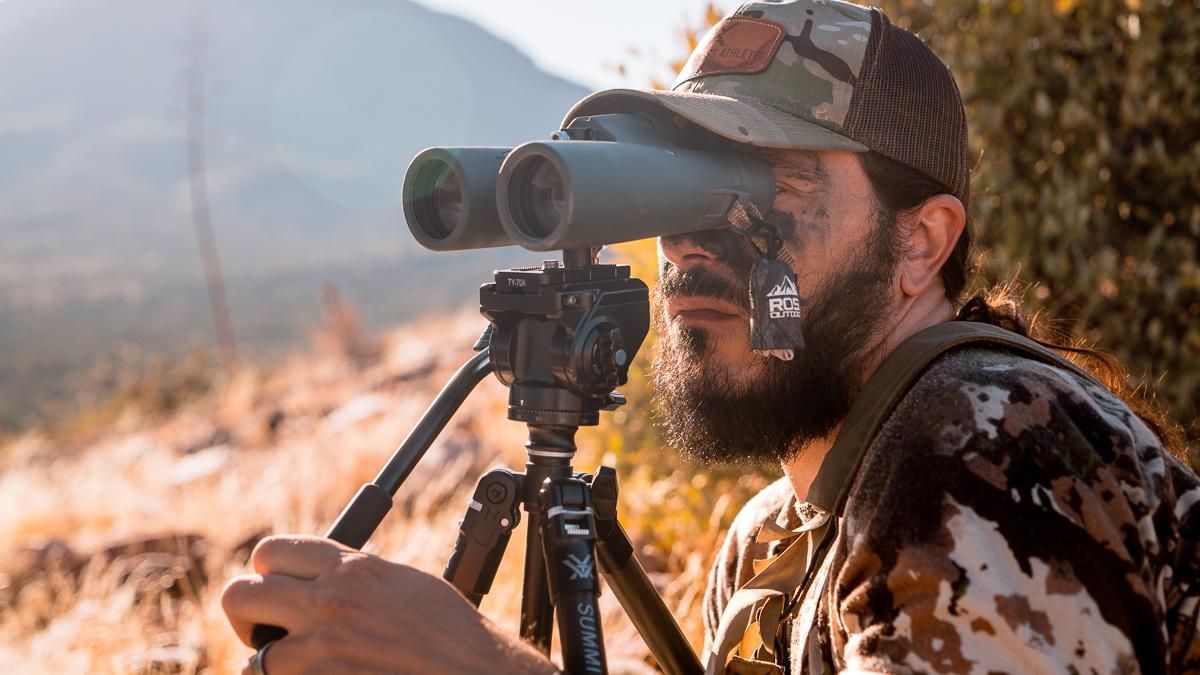
How to Pick the Best Size Binoculars for Big Game Hunting - Part 2
By Josh Kirchner
In How to Pick the Best Size Binoculars – Part 1, we go over the anatomy of a binocular, some criteria on picking the right size binocular, as well as budget. In this piece, we’re going to break the search down even farther. While there are definitely some do it all optic options out there, like the famed 10×42, different species across the country will serve up different scenarios. Situations where a certain optics size and system might shine brighter than another. Having the right binoculars for the job at hand will provide that extra little edge in our favor. So, we’re going to break this down by species, giving insight on picking the right binocular for each of them, to avoid bringing a knife to a gun fight or even visa versa.
Elk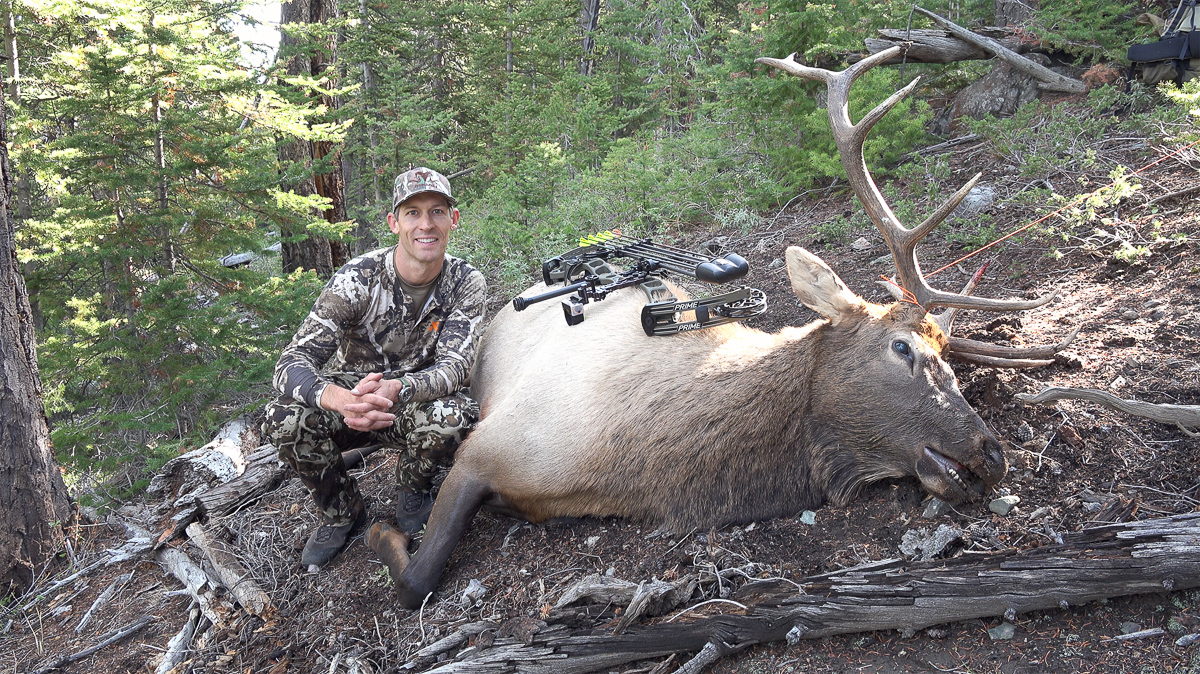
The wapiti. A species that runs dominion over the western hunting world. Between their haunting screams and royal like antlers, they’ve won the hearts of many. While calling these big boys into bow range during the month of September gets the most attention, that doesn’t mean that a pair of binoculars won’t come in handy for elk as they fill the forests with cries that keep us up at night though.
For close quarters and archery hunting, a pair of 8×42’s will be sufficient for most situations. These will offer a wide field of view, which will lend to quicker target acquisition. A binocular with more magnification would do more harm than good in close quarters situations. An 8x magnification is small enough to let a hunter glass through the dense timber looking for any sign of elk, whether that be an antler tine or an ear flick, while at the same time not being overkill.
Now, once the temps drop a bit and that September song has rang out, glassing is going to be much more at the forefront. For this time of year, we’re going to suggest the next notch up from the 8x, and bring a 10x. Why wouldn’t we bring more magnification? Well, elk are pretty big animals, and aren’t too difficult to spot, unlike the coues deer, which we’ll talk about later. Because of that a 10×42 is going to be plenty of binocular for a late season elk hunter. They’re still lightweight enough to wear on one’s chest and offer enough power to scan a massive amount of country for a massive animal. If sizing up antlers is your thing, instead of just bringing a bigger pair of binoculars, we’d suggest throwing a spotting scope into your pack. This will provide more versatility in your glassing system with both options.
The only caveat to our elk binocular suggestions is if you are spot an stalking elk with a bow. If you are planning to spot and stalk and not try to call in an elk, having a pair of 10x42's is a good option for all-around use. Plenty of power for up close encounters, but also great for spot and stalk hunting situations.
Mule Deer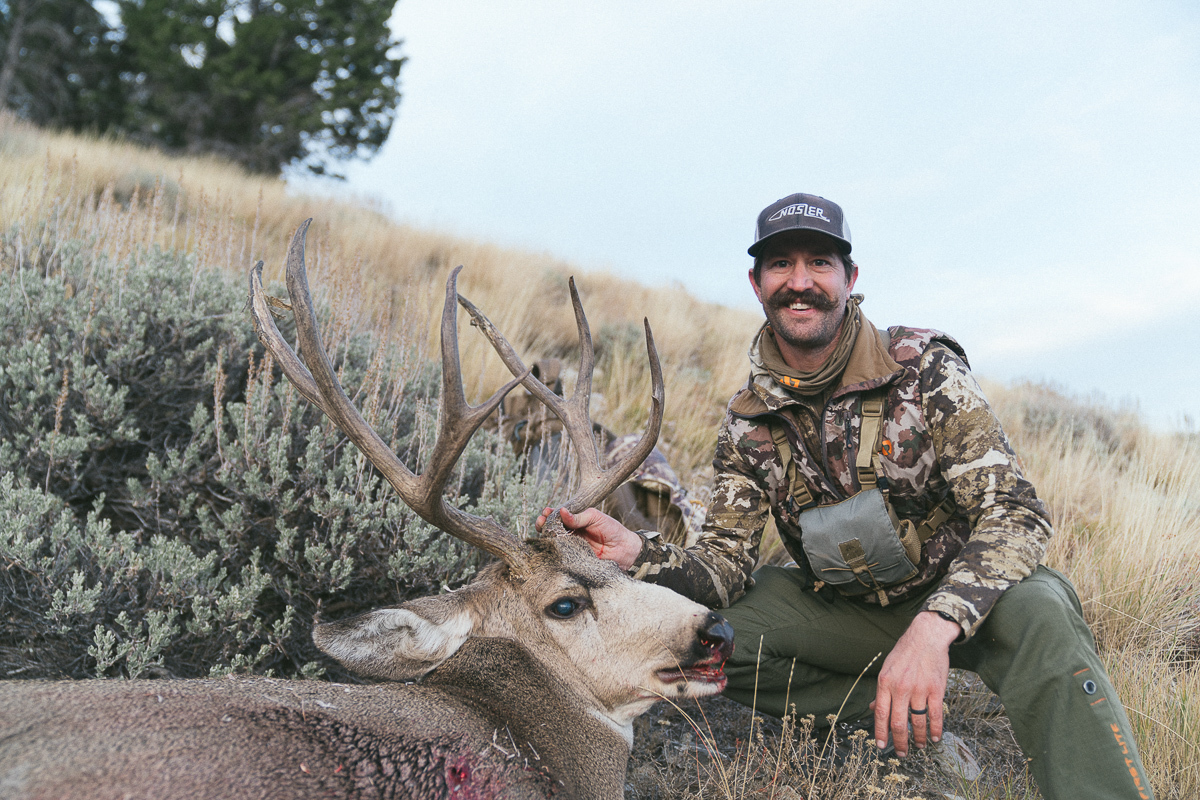
From scalding desert lowlands, to high in the mountains above the clouds, mule deer hunting in the west offers a wide variety of experiences. A hunter could essentially mold a mule deer hunt to their very own liking and style. With that diversity comes an assortment of different situations, which results in many possibilities for binocular choice.
If dry, prickly, lowland desert is your thing, glass is everything. Hunters will routinely get up high on one point and stay there all day long. Scanning the desert flats for miles all around is a recipe for success. This situation is going to call for mega magnification. Between a 15x and 20x power binocular mounted on a tripod will shine brighter than the burning sun above. Hours on end behind the glass is much better tackled using binoculars rather than a spotting scope. This is another reason for the higher power bino, instead of bringing a 10x/spotting scope combo. And because this isn’t that mobile of a hunt, carrying these bigger binoculars in a backpack isn’t a big deal. Our preferred size for this type of mule deer hunt is a 12x or 15x + magnification, but if we are backpack hunting typically we will not carry a 15x or higher simply due to the weight.
Now, if your flavor is negotiating your way high up above the trees in the alpine with dreams of velvet mule deer, then you’ll need to do some refiguring with binoculars. Unlike pounding the desert, these high altitude hunts are much more physical, often involving backpacking miles to reach a destination. For a hunt like this, weight is absolutely a factor. Just like the desert though, this is a very glassing intensive hunt. So, we need to keep the weight down, while not giving up glassing efficiency. In light of keeping the pounds to a minimum, a high quality 10×42 binocular mounted on a tripod will work just fine. It’s light enough to freehand, but powerful enough to really tear the mountains up on a tripod. Of course, we’d recommend bringing a spotting scope along on this hunt. This is why we don’t recommend a bigger binocular. It’s far better to keep the weight on your chest to a minimum. With the physical demand, this thinking is gold.
Coues Deer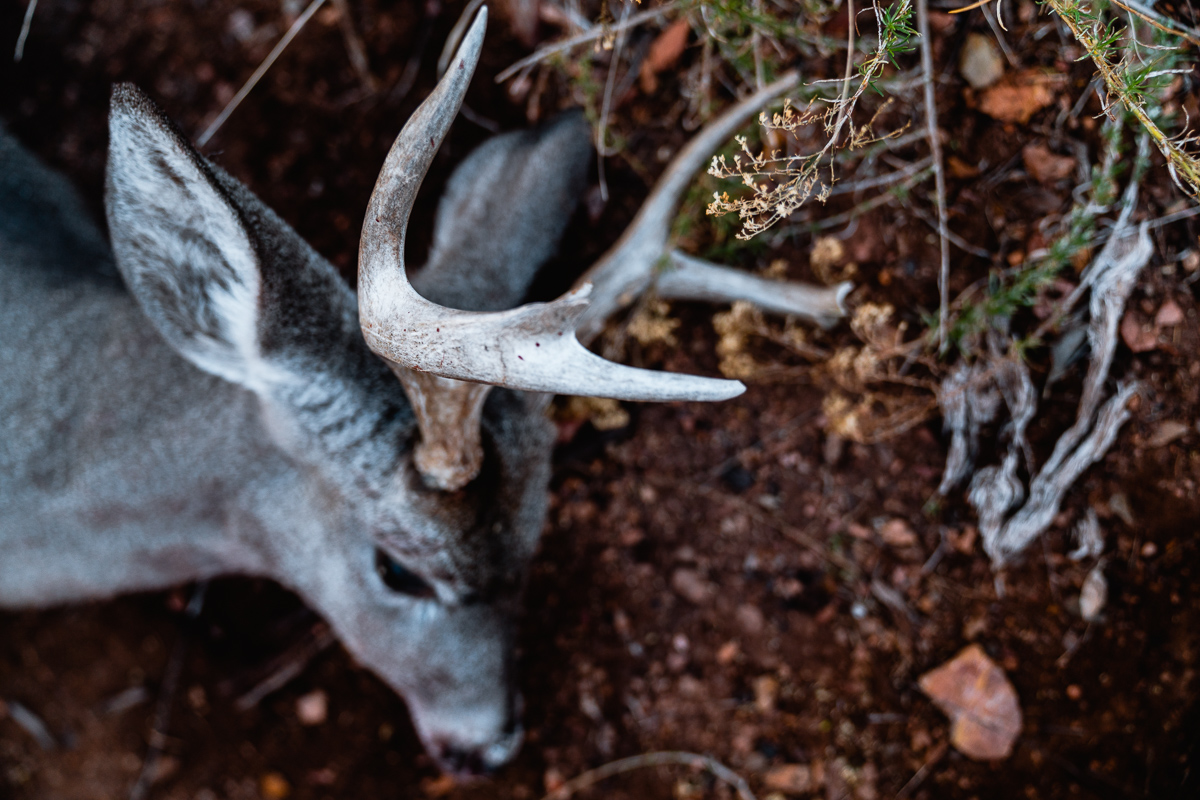
Coues deer, a subspecies of the whitetail deer, has grown in popularity with each passing year. Having a fairly small locale, hunters travel from all parts of the country to test their moxie with this wily little desert whitetail. Aptly named the gray ghost, coues are notorious for being masters at disappearing, reappearing, and disintegrating into their environment. In order to glass coues on the regular, you’ll need a proper optics arsenal.
When it comes to binocular choice for coues deer, bigger will likely be better. Hands down the most highly regarded binocular magnification for glassing coues deer is the 15×56. It’s “the one that won the coues” if that makes sense. These offer a wide field of view, great power, and are perfect for mounting on a tripod. That right there is a key. Always, and I repeat, always mount your binoculars on a tripod when hunting coues. The 18x and 20x would also do great in coues country. Many hunters will wear a 10x on their chest and carry a big binocular in their packs. Glassing for coues requires a lot of meticulous searching, which is why a binocular is a better choice for the long hours of peering through vegetation. Spotting scopes can work fine as well, but in general hunters can’t look through them as long as they can a binocular. Finding a needle in a haystack, or a coues in coues country, is one and the same. Along with your binoculars, patience is going to be your best ally.
Whitetail Deer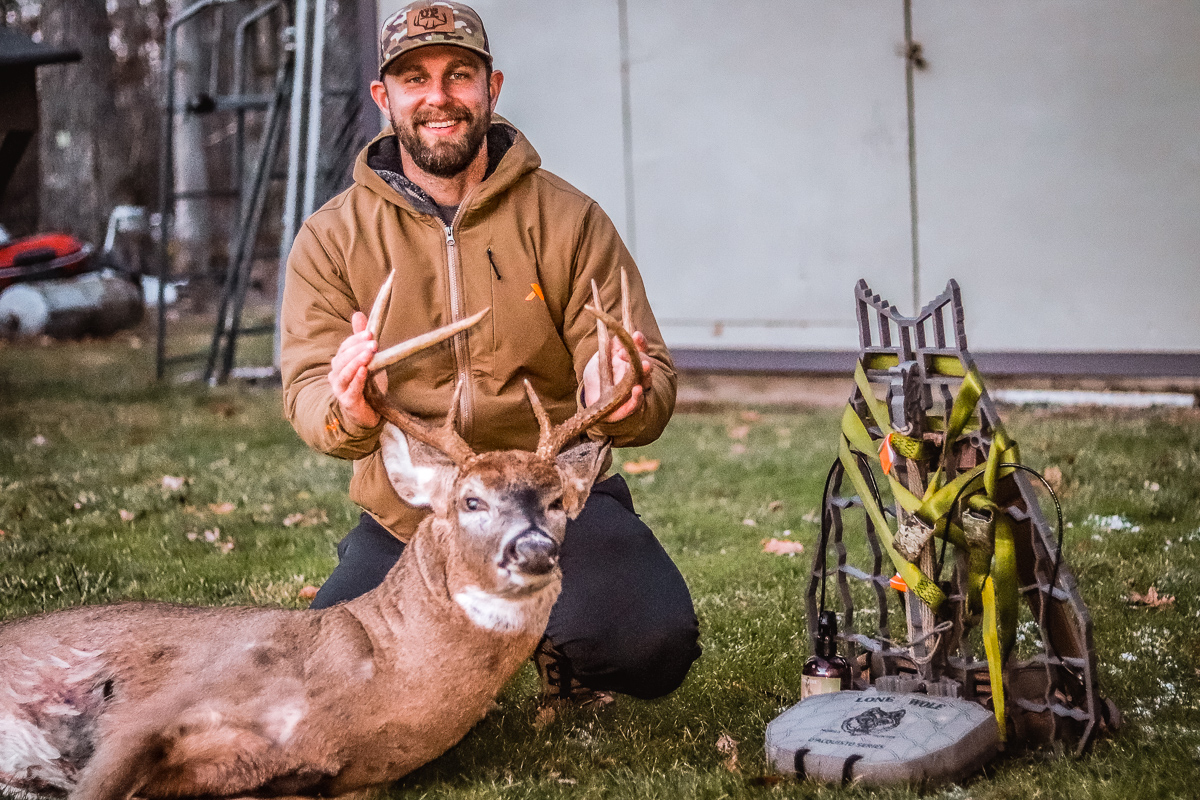
Hands down, the most hunted big game animal across the country is the beloved whitetail deer. From east to west and everywhere in between, this iconic deer species has entranced hunters from all walks of the hunting community. While these deer are mostly pursued by way of ambush hunting from a treestand or ground blind, that doesn’t mean that binoculars are out of the question. Not to mention, while most people think of whitetails as a midwest and eastern U.S. hunt, there are a lot of western whitetail hunting opportunities.
For long sits in the tree, a pair of 8x or 10x binoculars will serve a hunter well, with 10x’s being the most versatile. These are often dense timber patches that require a wide field of view, while not giving up the ability to really zone in on an incoming deer. It’s important to have a set of binos, especially when pursuing does. I know that sounds funny, but hear me out. Binoculars will help identify whether one is looking at a doe, a button buck, or even a buck that has already shed his antlers. You don’t want to go shooting something that you shouldn’t be shooting. A good set of binoculars will help avoid making mistakes.
Another area where a pair of binoculars will help out is when pre-season scouting, particularly in open fields. These whitetails can oftentimes be seen out feeding and/or bedding in crop fields from a long ways out. For these instances a bigger set of binoculars will win the day. A pair of 12x or even 15x would be great. Weight really isn’t a concern here, as most of these glassing sessions are done on or close to a road. These higher magnification binoculars will help you find where that monster buck is hanging before season.
Pronghorn 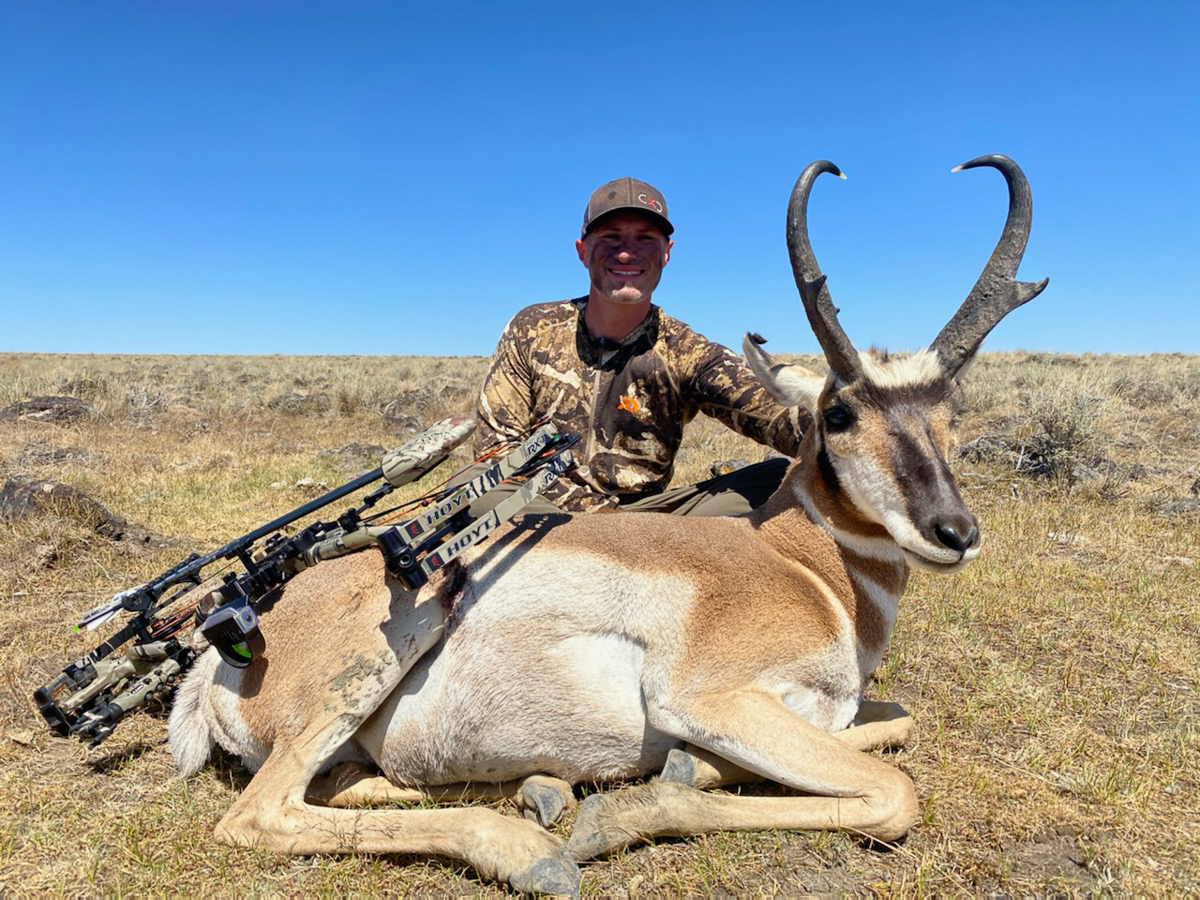
Pronghorn offers some of the best table fare out there for game meat, and they offer unique hunting in some of the west's wide open desert landscapes. Since most pronghorn hunting requires a lot of driving around and glassing from high knobs, generally a higher magnification binocular is going to be better.
However, Pronghorn are not the most difficult species to spot in the desert country. In our experience, a 10x or 12x binocular will work just fine for spotting pronghorn roaming the desert sage brush flats. We typically run a pair of 10x42 binos on a tripod to glass for pronghorn, and if we're looking at longer distances, a pair of 12x50 binoculars. There's no reason not to use a 15x or 18x magnification binocular, but it's usually more horsepower than you really need unless you're trophy hunting.
The other consideration for pronghorn are heat waves. At longer distances, particularly if you are hunting early in the season, a longer distance binocular, no matter how good the glass, is going to will have a difficult time outside of the early and late times of the day.
Sheep and Mountain Goat
Although both of these species could easily fit into their own categories, we're lumping them together here since in our experience, while mountain goats are way easier to spot than sheep, they occupy similar territory and the criteria for binoculars for both species are similar.
For the DIY-er out there, you're likely going to be hiking a ways to find either of these species, so weight is a significant factor to consider. However, being able to judge horn size is also important, particularly if you're hunting Dall Sheep in Alaska. But even for desert or bighorn sheep species, since these tags are usually lifetime tags if you're lucky enough to draw one (meaning, you only get to kill one sheep per state in most lower 48 states as a general rule), it is hard to think about killing any sheep without knowing the age class and making sure it's what you want.
For sheep hunting a quality spotting scope is a must have, in our opinion. Whether it is a once in a lifetime tag somewhere in the lower 48, or a Dall Sheep hunt in Alaska, you're going to want or need to get a sense of horn size based on legal take requirements or just making sure the animal you kill meets your expectations before hiking to get within range.
Based on all of that, we are still fans of the 10x42 for a sheep or goat hunting binocular. It's the sweet spot size and weight, especially on a tripod, to find animals in your binoculars and then use a spotting scope to get a better look. There are undoubtedly places where a higher magnification would be better and more advantageous, but if you have to hike with a higher magnification it just ads more weight, and the amount of weight you carry can't be ignored.
While a lot of goats stick out due to their color, they aren't always walking or laying in full view with their shocking white hair sticking out like a sore thumb. We've found plenty of goats through our 10x42's by glassing the same way we would for mule deer, but finding a small patch of hair, or a bedded goat in the shade of a tree.
In Short
At the end of the road, we'd like to leave you with a few things to chew on. First, buy the absolute best binoculars that you can afford. The higher quality glass you're looking through, the longer you'll stay behind it, and better overall experience you'll have. Second, if there was one binocular magnification to rule them all, it is hands down the 10x42. This binocular size is unmatched in its versatility across the board of species and terrains we've talked about. From your chest to the tripod the 10x42 holds its ground.
Lastly, we'd like to lay out a few different binocular models to check out for each magnification we've mentioned. Vortex Optics is our go to brand for any optic. For those looking to save some green, but still get a quality pair of binos, check out their Diamondback HD line. If one is really looking for a premier type of glass though, the Razor UHD line is where it's at. Both of these models have a wide variety of magnification options that cover the gamut for all scenarios. If you have any questions, feel free to hit us up. Aside from that, good glassing out there and we hope you turn up what you're looking for.